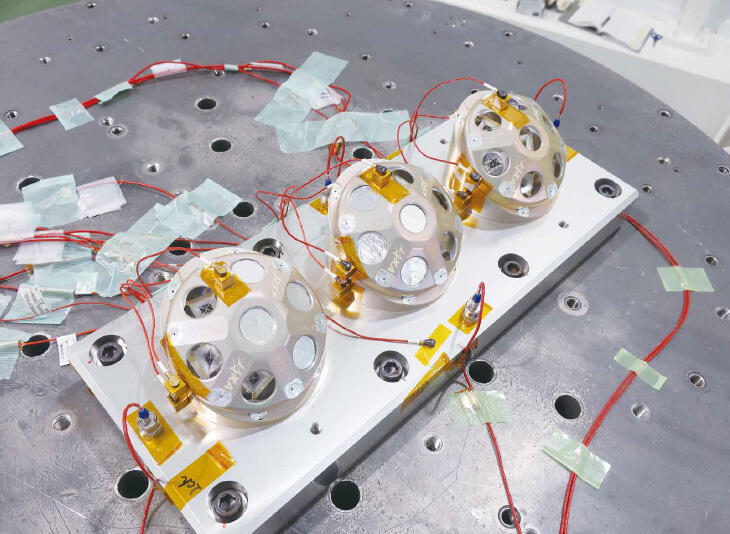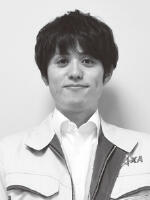Space Tracking and Communications Center
To be Demonstrated Using the New Unmanned Spacecraft (HTV-X)
A Small, Lightweight and Inexpensive
Reflector that will Contribute to
Space Debris Observations
Space debris (referred to here as "debris") is becoming an international problem. Demonstration tests are just about to start on the general-purpose SLR reflector called Mt. FUJI, which it is hoped will contribute as a debris observation method. AKIYAMA Yuki and NAKAMURA Shinichi who are both involved in its development say that SLR is catching attention in the field of SSA (space situational awareness) as a third observational option after radars and telescopes.
Satellite laser ranging (SLR) is a technology in which a laser pulse is fired from a terrestrial SLR station to a reflector loaded on a satellite, and distances can be calculated by the time it takes for the laser pulse to return. It is possible to measure the distance between the point that the laser is fired to the satellite down to an accuracy of millimeter units.
AKIYAMA, who is in charge of the detailed design, explains the merits of Mt. FUJI. "Firstly, satellites loaded with Mt. FUJI can ascertain positions with a very high degree of precision and determine orbits. Secondly, it becomes possible to estimate spin motion. Thirdly, as it doesn't require any electronic interface the first and second merits are still feasible even after the satellite completes its role and becomes debris itself.
In recent years, congestion has become a problem with large numbers of satellites flying past each other due to the boom in commercial use of low Earth orbits. Naturally, it is essential to accurately pinpoint the exact orbit of debris in order to prevent it from collisions. Furthermore, satellites are certain to become debris once they have completed operation, and eventually they reenter the atmosphere in an uncontrollable state. This is why improving their perceptibility has started to be taken seriously on an international scale. In response to this state of affairs, Mt. FUJI has been designed specifically for low Earth orbits. The design has been kept simple by reducing the number of mirrors used to an absolute minimum while still assuring reflective performance at altitudes of 800km or less.
AKIYAMA says, "Mt. FUJI can be manufactured using ordinary metal processing machinery. By disclosing technical information such as manufacturing blue prints and so on, we expect that it will become possible to manufacture Mt. FUJI at lower costs than hitherto SLR reflectors. We expect this factor to lower the hurdle of loading the units on spacecraft."
A smaller Mini Mt. FUJI is also being developed in parallel with Mt. FUJI. The Mini Mt. FUJI is envisaged to be used on microsatellites launched from the International Space Station at altitudes of 400km or less.

It has also been decided to load three Mt. FUJI units on the new unmanned spacecraft HTV-X, which is scheduled for launch in FY2022. The demonstration test on the HTV-X will be conducted in two stages. Firstly, a laser will be fired from a terrestrial SLR station, and the performance demonstration of Mt. FUJI as an SLR reflector will be conducted by measuring the reflection received back at the SLR station. Then, the HTV-X will be made to fly in a special attitude motion, during which SLR stations all over the world will acquire observational data from Mt. FUJI. Based on this data, a precision evaluation of the spin motion will be conducted.
In closing, NAKAMURA expresses his expectations for Mt. FUJI. "I hope that during my lifetime, Mt. FUJI will exercise its capabilities to forecast the reentry of space debris and be useful to the world by contributing to crisis management."
Profile

|
|
|---|

|
|
|---|
All the images are copyrighted ©JAXA unless otherwise noticed.
- Home>
- Global Activity>
- Public Relations>
- JAXA’s>
- JAXA's No.86>
- A Small, Lightweight and Inexpensive Reflector that will Contribute to Space Debris Observations